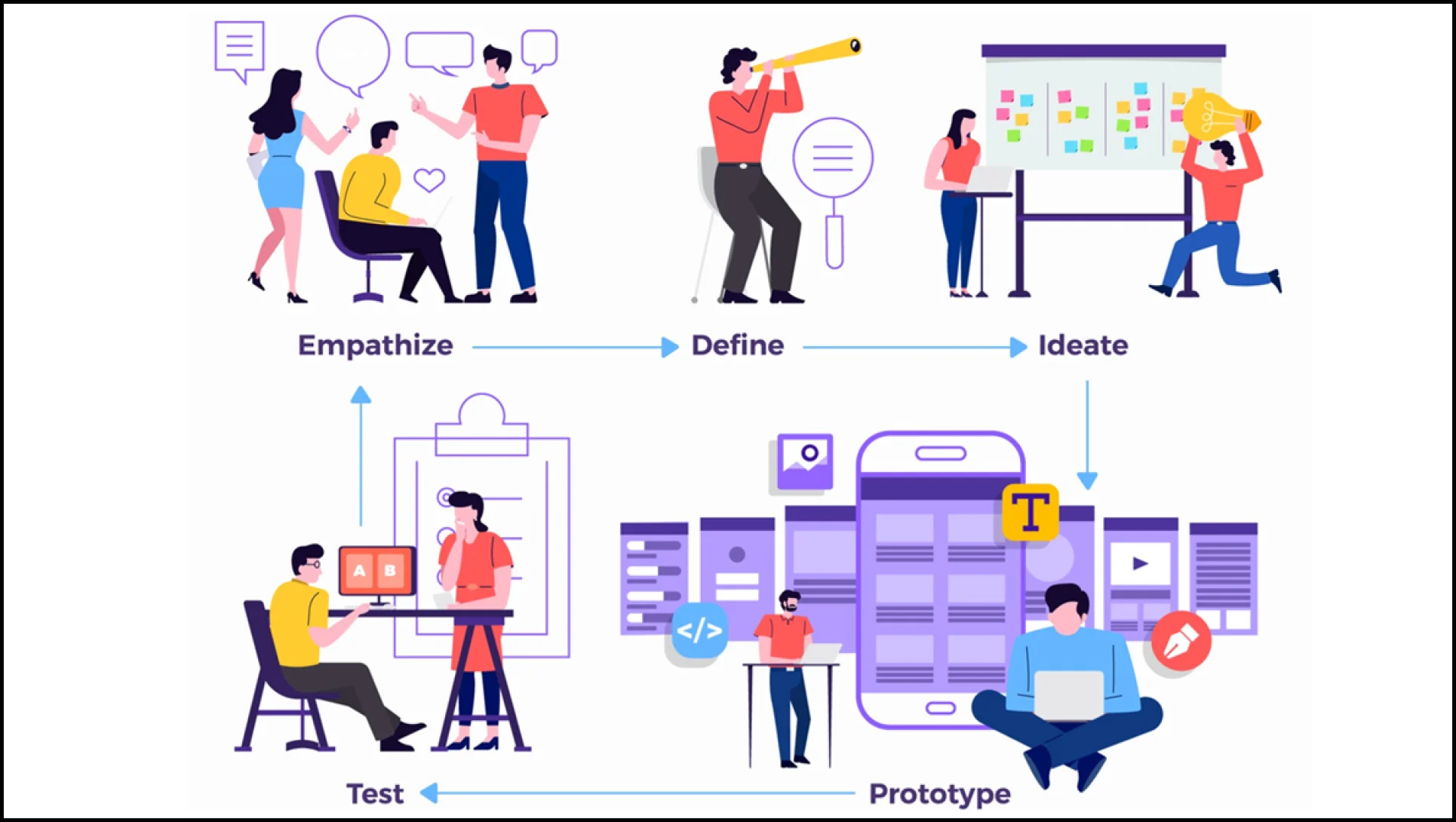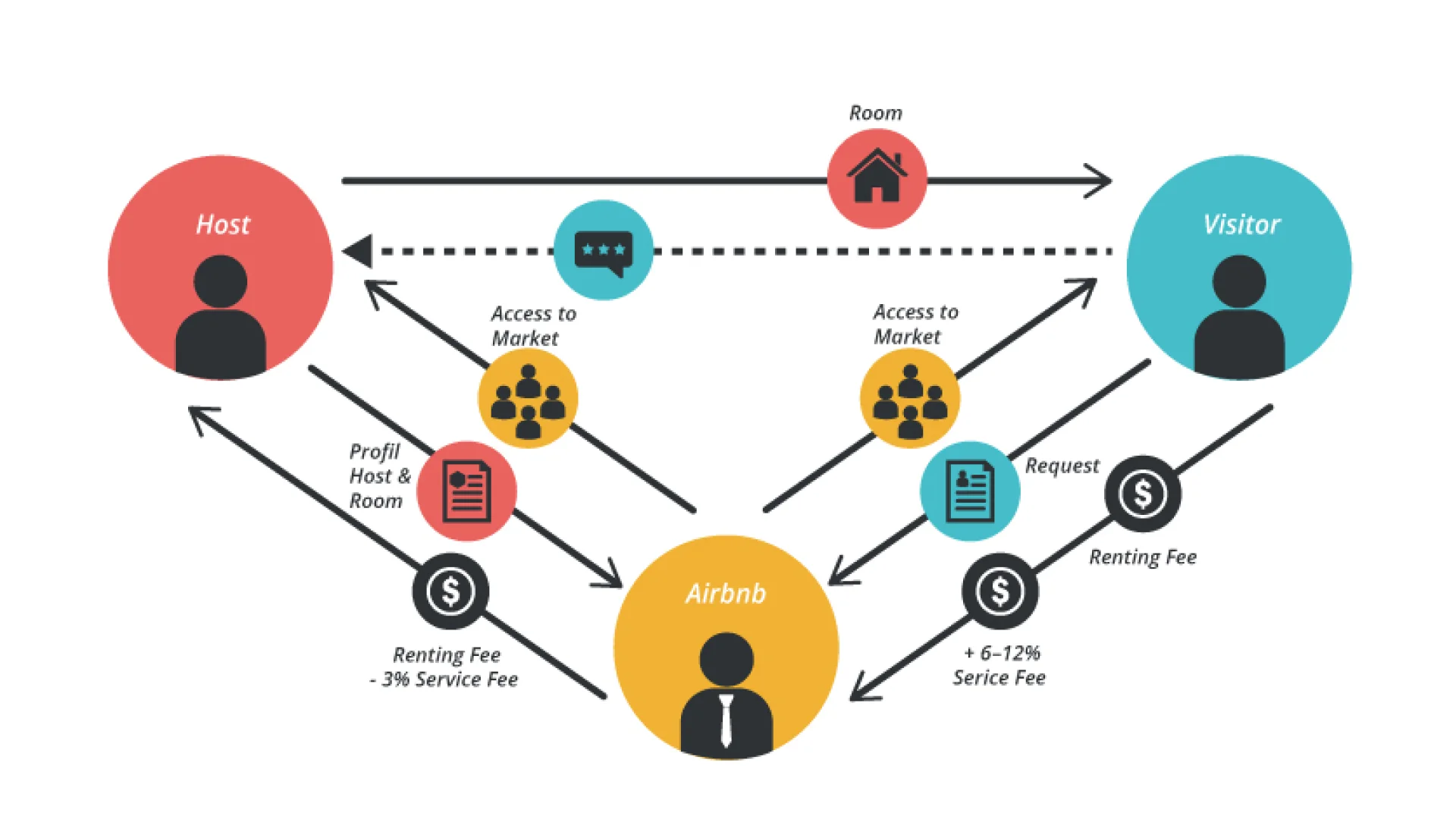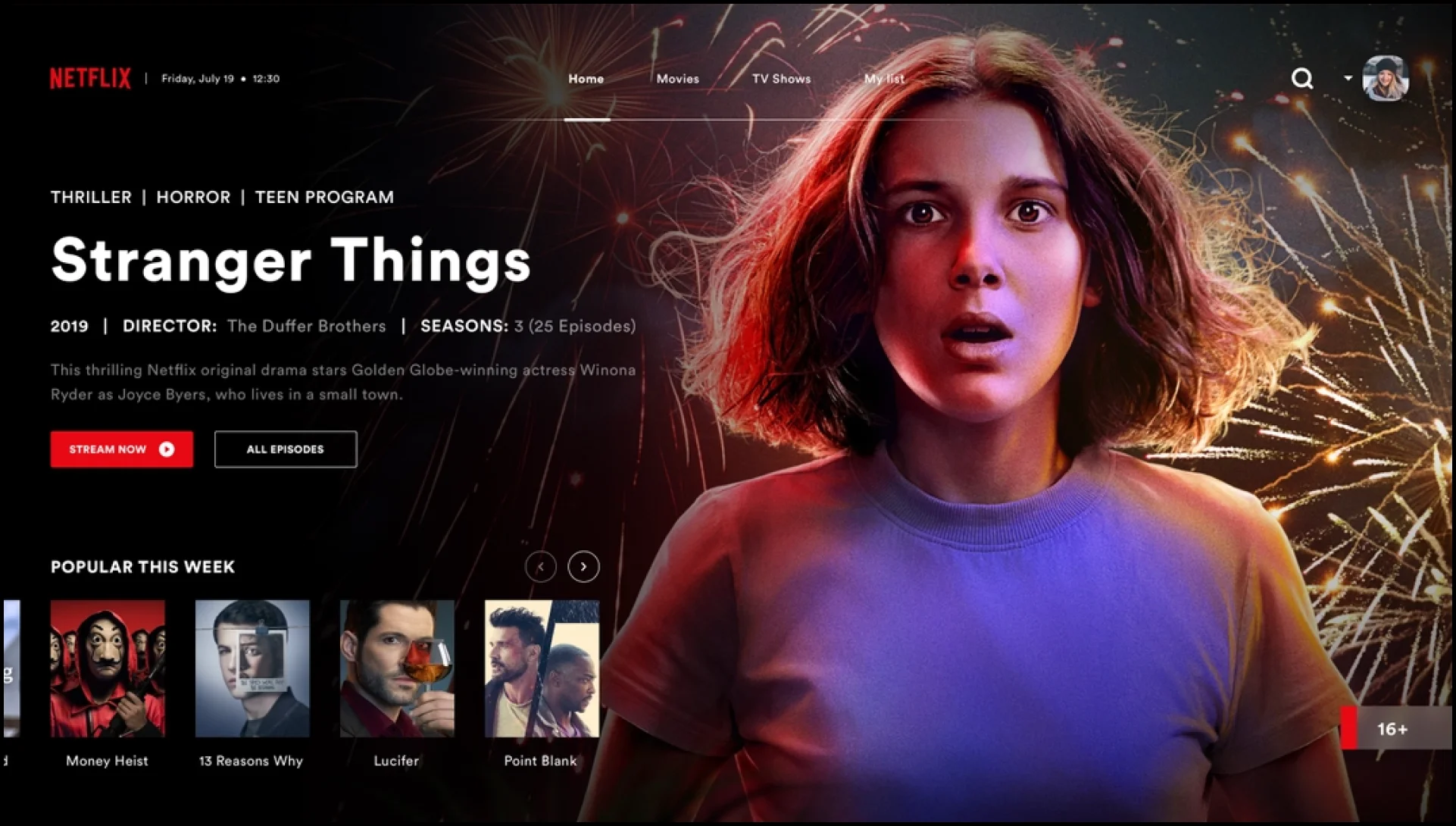
August 9 2023
4 min read

Apr
Nearly a decade ago, when Airbnb was on the brink of going bust, they had a last straw: Design Thinking. The brand was terribly wrong in understanding what its customers really wanted. Gradually, they introduced new features and made small bets to measure and understand the returns fully. In no time, their growth spiked, and they landed the best opportunities.
What moved the needle for Airbnb?
Design Thinking― getting into the customer’s shoes to understand the pain points and strategically working on improving them.
A close cousin of innovation, design thinking has become the north star for several businesses. It has become the backbone of project management. Approaching your projects like a designer makes ample room for clarity and innovation while boosting business results. In this blog, we will walk you through the following:
What is design thinking?
What are the steps involved in design thinking?
What challenges does design thinking solve?
Benefits of incorporating design thinking in project management
Real-world examples of design thinking for project managers
In the realm of project management, design thinking is a problem-solving process to generate innovative and user-centric solutions. It lets you understand your projects inside out and deliver the best results for users and stakeholders. Instead of simply offering a quick (yet superficial) solution to your problems, design thinking acts as a framework that enables you to -
Identify the challenge
Trigger your creative thinking
Propose a holistic solution
Brigham Young University interestingly explains ‘design thinking’ as “empathizing with the people impacted by a problem and using that information to devise solutions.”
In the long haul, design thinking in project management equips your team members to solve problems based on “human” needs. In today’s projects, design thinking is closely knit with Agile project management, which lets you incorporate and adapt to changes faster.
Listed below are a few salient features of design thinking that improves project management:
User-centered: You experience solutions through the eyes of the end user.
Co-creative: Involve all stakeholders in the design process.
Sequencing: Visualize your user experience as a sequence of interrelated actions.
Evidencing: Visualize intangible solutions as physical artifacts.
Holistic: Consider your end-to-end user experience as s customer journey map
A deep dive into the world of project management uncovers the following challenges that can be fixed with design thinking:
Projects often come to a screeching halt due to major configuration changes requested in the later stages, losing out to a competitor solution, and more. Design thinking lets you discover right in the beginning―
What the customer exactly wants
What can be done differently to make room for changes in customer requirements
In complex and uncertain project environments, managers are often compelled to tighten project controls and lock in resources and requirements. The biggest challenge here is to evaluate which initiatives will deliver the results your customer truly needs.
Your stakeholders often get tempted by unsolicited demonstrations of solutions that can apparently boost their productivity and goodwill sooner. Faced with this challenge, managers often follow the standard project management route. They try to reinforce governance, report the impact of delayed decision-making, and may even propose new operational readiness assessments.
However, the biggest challenge becomes: how to reconnect with the user’s needs when your project demands stability?
Resource brain drain is not uncommon. Consider the following scenarios―
A random (unplanned) yet major acquisition happens. Most key team members are pulled away to focus on different deliverables—the project stalls. The manager starts negotiating with the project sponsors regarding the scope and schedule. The critical challenge to ponder over is:
Could the manager allow the project to pause confidently while the key members determined the impact this acquisition might’ve had on the business?
We will now explore the different stages in design thinking and understand how they intersect with project management.

Key findings from an extensive study of nearly 600 business and IT executives by Geneca, a software development firm, reveal that only 55% of people involved in projects clearly know the business objectives. The same study shows that more than 80% of people in a project feel that the requirements do not meet the business needs.
You may wonder why.
This is because traditional approaches to project management are ill-suited to address changes in dynamic business environments. The struggle is real in creative contexts characterized by complexity and uncertainty. Design thinking can float your sinking ship in five distinct stages:
You must walk a mile in your user’s shoes to understand their needs fully. Perform extensive research and interviews to understand their pain points and what could meet their needs. User research provides answers to basic questions like:
What are the needs and wants of your end user?
What challenges are your users facing?
What motivates them?
In IT project management, user research will help you understand end users at a human level. This is important to develop innovative solutions that cater for their news.
The ‘define’ phase challenges project managers to reflect on observations based on their user research and develop a clear problem statement. This streamlines your workflow and helps you build a strong foundation for your team. Eventually, this phase lets you design high-quality products and services that are valuable to your customers.
To define a problem:
Outline all the variables involved (e.g., business requirements, user needs, constraints, assumptions. etc.).
Be as specific as possible.
Following these steps will create a strong base for the next phase (ideation) and enable you to develop solutions that address the problem.
Now that you thoroughly understand the problem and requirements of your end users, you need to act upon it. Sit with your team and brainstorm multiple potential solutions. This phase is all about unleashing creativity. Encourage creativity to come up with several possible solutions.
Here are some cues:
Apply brainstorming techniques such as lateral thinking or mind-mapping
Inspire out-of-the-box ideas
Driving innovation through creativity is what sets you apart as a manager who knows how to blend design thinking with project management to deliver the best outcomes.
By now, you’ve already established the most effective solution. Next, it’s time to put your theory into practice by developing a prototype. Based on the problem, your prototype may resemble:
Storyboards
Sketches
The finished product as a 3D model
The aim here is to test your solution. Make sure you bear the problem statement in mind throughout the design of your prototype. Generating a prototype is a critical step in design thinking for project managers. It allows you to test your assumptions and glean insights as feedback from your users. Therefore early on in the project, you know if you are on the right track.
Post prototyping, you must test your solution in the real world. You can perform testing in many ways, such as:
If you’ve created a website or a software program, you may collect user feedback.
If your prototype is physical, you may conduct surveys and interviews to garner input from real-world users.
By repeatedly testing your design, you are eliminating potential problems and increasing the chances of success of your project team. If your testing fails, your team must return to an earlier stage and repeat the process until the outcome is closer to the desired results.
Companies realize seven key benefits of incorporating design thinking into project management. Here we go:
What binds design thinking with project management is “adaptability.” In practice, it means making room for frequent changes in the project, which can be managed with flexible change control. This is possible when you foster a culture combining creative and analytical thinking and encourage a constant inflow of organic thoughts and ideas.
Design thinking promotes exhaustive data collection and the generation of creative ideas. This helps project managers work with multiple options. They can now perform as many A/B tests as required to find the best path for the project. Needless to say, this has become an incredible learning experience as well.
Due to its user-centric approach and focus on empathy, design thinking is instrumental in stakeholder management. In complex projects, stakeholders play a vital role in the execution. This results in a wide range of inputs and ideas to choose from.
For design thinking and project management to work in perfect sync, having people with different backgrounds and experiences on your team is crucial.
Effective project strategy and execution are built on the foundation of leadership, ideation, and creative solutions. With the necessary tools and technologies, project managers can materialize them within the project’s scope.
Design thinking enables the seamless integration of analytics and creative solutions in a collaborative environment to deliver the best outcomes.
More often than not, you have to work with cross-functional teams. Your recorded knowledge based on earlier design thinking strategies can be useful when you work on different projects involving such teams.
Retain and reuse your expertise with a keen eye for process details. Educate your team members that the sooner a project fails, the better it is to fix the challenges and move forward.
Encouraging a sage environment is crucial for your team to trust you and develop organic ideas and perspectives. When you root for creativity and analytics from a place of knowledge, your project has a higher chance of succeeding.
You get the best ideas out of design thinking when you keep sight of the end goal. Regular brainstorming and mapping of every activity with the ultimate user requirements foster adaptability and adjustment to attain overarching project goals. This encourages creativity to form new ideas, explore new patterns, and innovate.
Only when you draw inspiration from apparently unrelated ideas can you create a unique solution to customer problems.
A collaborative environment is the breeding ground for open discussions. Project managers are adopting a collaborative approach to accommodate the complex requirements of stakeholders. This helps facilitate conversations across teams and, thus:
Brings together a wide variety of ideas. Seeing the same problem from different angles leads to better solutions.
It helps tap into the team’s and stakeholders’ creative potential to reframe problems. Here’s your chance as a project manager to leverage design thinking and determine where to draw the boundaries to minimize conflict.
It enables you to have an open mind. When working with multiple stakeholders, being patient and welcoming contrasting ideas has its merit. Keeping competing priorities and egos aside, active listening and balanced optimism culminate in a creative solution.
Let’s go back to the Airbnb story. Right when their revenue flatlined at $200 per week.
Shall we?
In 2008, they collaborated with an engineer to solve the common challenge in travel: Where to stay? The team tossed out a non-technical and seemingly non-scalable solution. They rented a camera and traveled to New York to spend some time with customers listing properties.
The primary goal was to replace rookie photography with high-resolution images.
A week later, their revenue doubled to $400 per week.
The team saw a silver lining.
This exact moment was the turning point for the company. They let their intuition and creativity drive their actions and started seeing incremental results. Over the years, the cumulative outcome has resulted in the household name that Airbnb is today.
Joe Gebbia, co-founder of Airbnb, says, “we’re trying to create an environment where people can see a glimmer of something and basically throw dynamite on it and blow it up to become something bigger than anyone could have ever imagined.”
Today, design thinking is the bedrock of Airbnb’s growing business. Most of their successful projects were attributed to human experience and creativity:
Empathy Travel: Every new employee at Airbnb has to take a trip with them and document it. This helps them gain an immersive experience and learn what the customer feels.
Snow White Project: This entails mapping the customer journey to highlight critical moments of truth within the guest, host, and hiring processes in three stories.
No wonder their unconventional strategies have paid off. Design thinking helped them tap into the experience economy and boosted their valuation to $110 billion.

Assuming we have movie buffs and binge-watchers reading this blog, let’s talk about Netflix :)
The OTT giant has taken design thinking to the next level. It covers the end-to-end process of user interaction within the system. You’re no stranger to its user-friendly design features like:
Cards that can be shifted flipped over, or brought closer. Basically, anyway you’d like to interact.
Personalization— AI-driven recommendations based on your watchlist and viewing history.

Netflix’s design thinking follows four basic rules:
1. Think big: Netflix’s market capture strategy was aggressive. It literally replaced the much-popular DVD delivery business and urged people to adapt to digital innovation. During the early days, its key competitor, Blockbuster, required buyers to drive to and fro for DVD rental and return. This was a hassle. Netflix identified the pain point and introduced a subscription model to deliver DVDs directly to customer addresses.
2. Start small: Instead of simply launching a new product, Netflix waited for the right opportunity. When the company realized DVDs were becoming obsolete, it launched an on-demand streaming service and stayed ahead of the curve.
3. Fail fast: Netflix did not waste time on products/models that weren’t working. They abandoned early streaming attempts.
4. Rapid scaling: Soon after, Netflix began catering to customer demands for original, thought-provoking content that was not aired elsewhere.
In 2016, Netflix added short trailers to its interface to improve user experience. From that point forward, Netflix made incremental updates to satisfy evolving customer needs - a fundamental tenet of design thinking.
Design Thinking is all about your customer. What they need and feel, how you can fulfill their expectations, and more. That is precisely why it is so important for project managers. It helps you deliver purposeful and responsive solutions to your users’ needs.
Elevate your project management portfolio with Edbrick’s training programs. Reach out to us today.

August 9 2023
4 min read

July 18 2023
6 min read

June 19 2023
8 min read

June 12 2023
5 min read